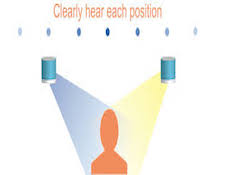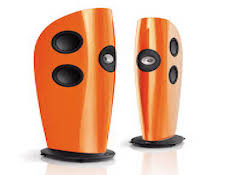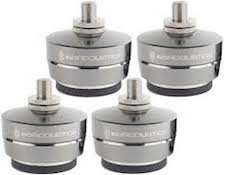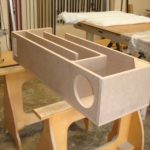It’s the time of year for saving money!
Anyone who has ever been at a loss to explain something that, on the surface, should seem utterly explainable will understand this. Recently, I found myself somewhat at a loss to explain something I had been neglecting to address for almost a year. My source of confusion? Imaging.
 There should essentially not be any significant ambiguity in speaker placement. Step one, find the best position that yields the best sound and most precise imaging – step two, leave the speakers there. Speaker placement is partly to mostly responsible for the imaging your system portrays.
There should essentially not be any significant ambiguity in speaker placement. Step one, find the best position that yields the best sound and most precise imaging – step two, leave the speakers there. Speaker placement is partly to mostly responsible for the imaging your system portrays.
In spite of this simple logic I have, for just over a year now, been experiencing something that didn’t make a lot of sense. My mystery? Somehow, about every six weeks or so, I would notice that, seemingly all of the sudden, the imaging was mysteriously out of kilter. Maybe the sonic presentation was inexplicably concentrated to the right rather than across the soundstage. Or maybe the center image suddenly shifted a little to the left or the right, again, inexplicably.
This unexplained phenomenon is not imaging that is supposed to be more right than left or slightly off center. Moreover, I noticed this on music on which it was not supposed to be occurring – music I had heard many times and knew where the imaging should be.
When I would notice this, and after making an unsuccessful attempt at convincing myself that I was imagining things, I’d reluctantly pull out the tape measure and digital measurer and start checking speaker placement. Sure enough, the distances from the speaker to the side and front walls of one speaker were not exactly and precisely identical to the other speaker. Consequently, if hyper precise imaging is to ever be achieved, equal distances of both speakers to the walls are one condition that absolutely must be met. Usually, however, I discounted the why and simply returned the speakers to their correct position and returned to enjoying music.
 There are no little kids living in my house. I don’t have a dog that might come into my audio room and for whatever reason move my speakers. Besides, if I did have any animals I’d just keep the door to the audio room closed. The lady that cleans my house is so scared of, and careful around my speakers specifically and system in general, whenever she is near them you’d think she was disarming a bomb. The world isn’t tilting off its axis and the house isn’t sinking into the ground. So what the heck is causing this?
There are no little kids living in my house. I don’t have a dog that might come into my audio room and for whatever reason move my speakers. Besides, if I did have any animals I’d just keep the door to the audio room closed. The lady that cleans my house is so scared of, and careful around my speakers specifically and system in general, whenever she is near them you’d think she was disarming a bomb. The world isn’t tilting off its axis and the house isn’t sinking into the ground. So what the heck is causing this?
The last time this happened it coincided with my trip to AXPONA in Chicago. In fact, my little epiphany occurred the night before I was to leave for the airport. I decided, however, to completely forget about speaker placement until I returned home from Chicago.

By happenstance, I wondered into the Iso Acoustics room at AXPONA. They had a demo set up using their Gaia footer devices under two identical pairs of smallish floorstanding speakers. Switching between the two, one with the footers and one without, yielded a perceptible difference, and admittedly, an improvement in the imaging from more narrow in focus to more expansive.
I was intrigued by the rubber looking membrane on the bottom and when I questioned Dave Morrison, the company President, about the material all he would tell me was that it was proprietary. At that point he started explaining what the Gaia devices are intended to do. One thing he mentioned immediately clicked – a speaker’s tendency to be subjected to lateral movement due to minute cabinet vibrations.
Lateral movement of the speaker due to cabinet vibrations. Bingo, there’s my problem.

In my KEF Blades, I had installed the factory spikes. Because the speakers are sitting on Symposium Super Plus Platforms and I didn’t want them scratched, I was using the felt bottomed flat discs that KEF supplies with the spike kit. Yes, felt bottomed discs. Now the source of my imaging mystery had finally revealed itself. That cartoon light bulb suddenly appeared over my head. I basically, and incorrectly, assumed that a 130 Lb. speaker wouldn’t move by itself once placed somewhere. Besides, the Blades cabinets are very dead anyway, no cabinet vibration can be felt at any volume. Still, move they did – ever so slightly and over weeks of a timeframe – but again, move they did.
Enter the Gaia I.
I decided to purchase a set of the footer devices on the suspicion they would not only improve the imaging but would also prevent the speakers from falling victim to lateral movement due to cabinet vibrations. Even though I couldn’t necessarily feel vibrations in the cabinet of my speakers doesn’t mean they weren’t there and having a negative effect on the sonic presentation.
It has now been several months since I installed the Gaia I footers under my speakers. Not only did the imaging, as promised, improve to a more widespread presentation, the bass is also slightly tighter and more well defined and the overall clarity has improved. Perhaps best of all, due to the proprietary rubber membrane on the bottom of the footer, I have no doubt that any speaker movement is now highly unlikely. In fact, if you do move the speaker, you hear a “pop” sound when the footer lets go of the platform – much the same way a suction cup “pops” when pulled from a smooth, flat surface.
Sometimes it’s the small things in audio that can yield surprising results. So if your imaging is sometimes, and inexplicably, a little off, if your dimensions to the front and side walls are not where you know they should be, consider lateral movement caused by cabinet vibrations. That may very well be the source of your problem – or the dog, whichever seems more likely.









